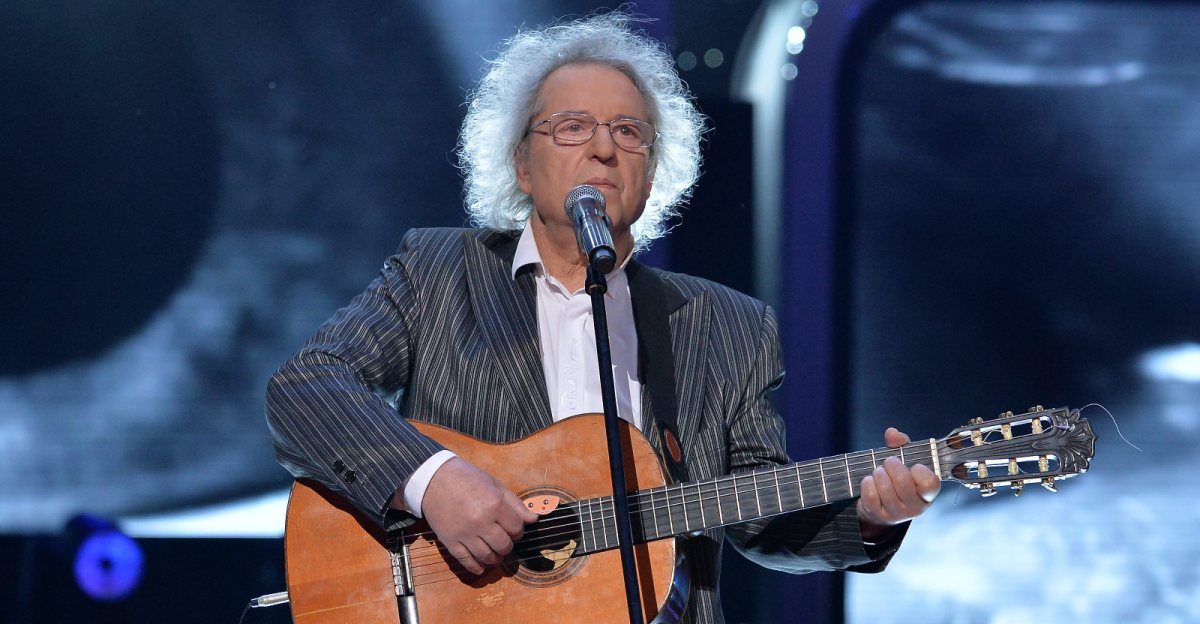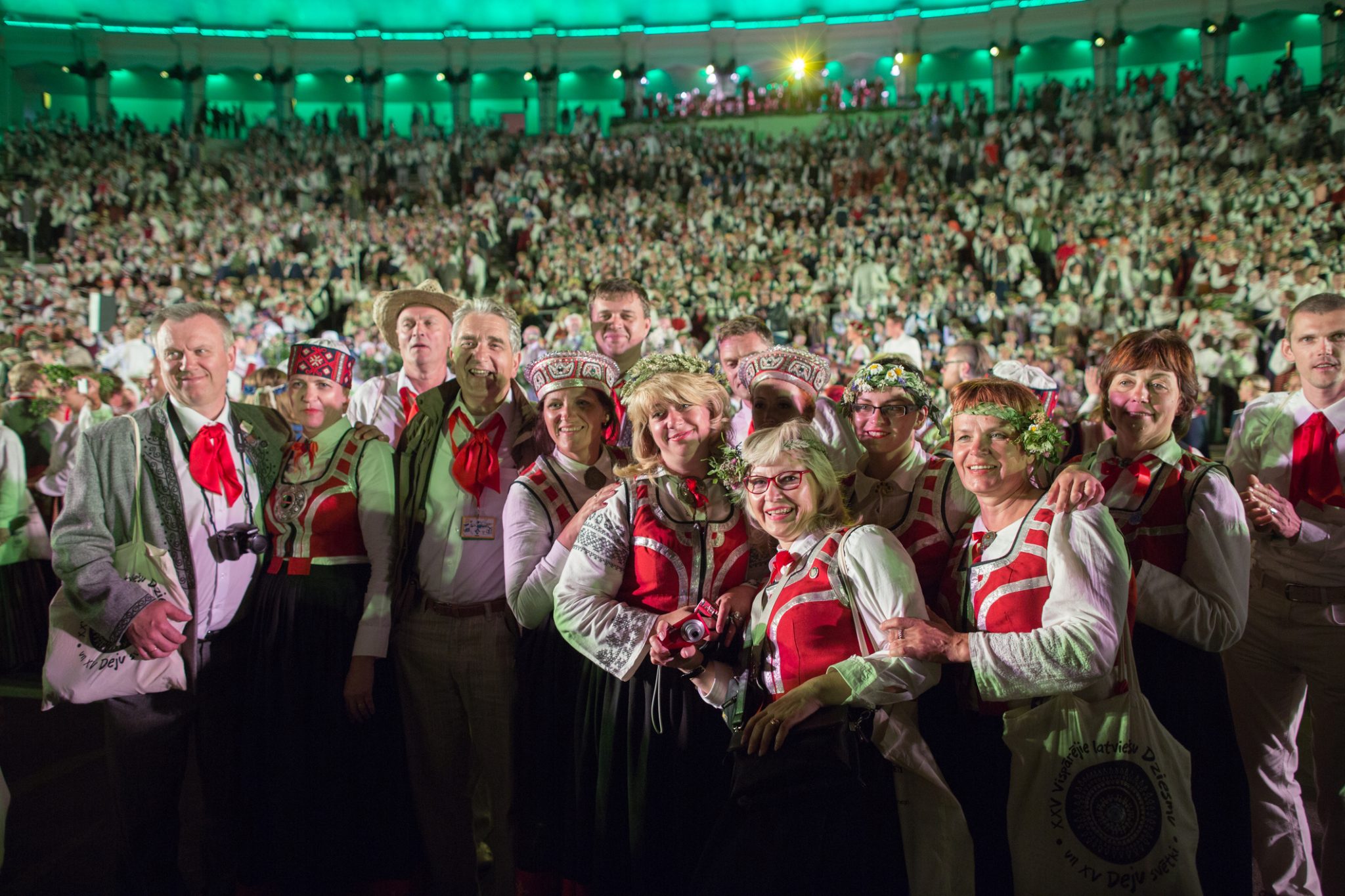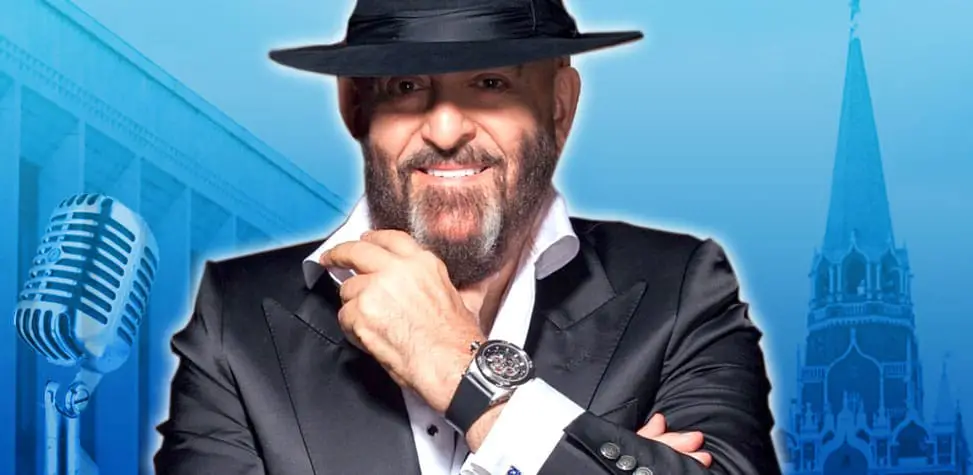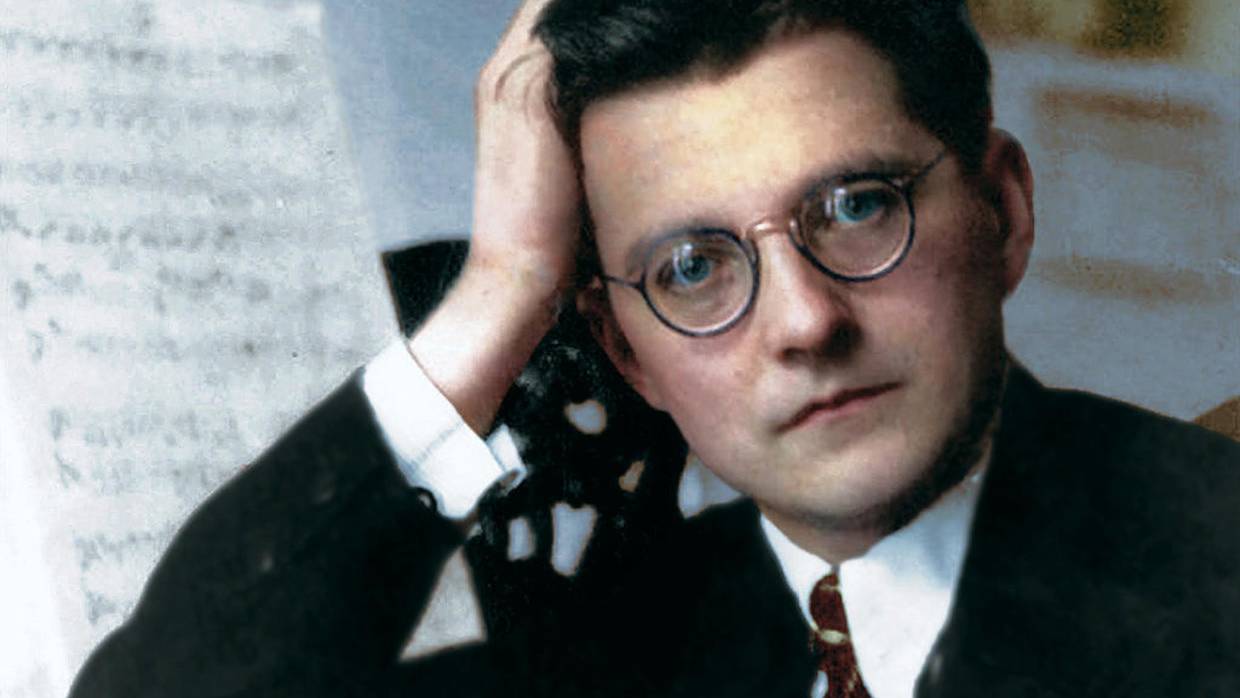The history of Soviet music cannot be discussed without mentioning the Decree of 1948 and the anti-Formalist campaign that followed. Dmitri Shostakovich was one of a select number of Soviet composers who were denounced by this powerful document. After its publication, several of Shostakovich’s compositions were banned from performance, he temporarily lost his job at the Moscow conservatory, and he gained a negative reputation among Soviet music critics and Central Committee members. One could say he was temporarily put on the “naughty” list of the Central Committee, something that might have had very serious repercussions if Shostakovich had not managed a speedy rehabilitation.
Today, Shostakovich is often regarded as a figure of rebellion and dissent against the tyrannical regime of the Soviet Union. This view is largely a result of the publication of the book Testimony by Solomon Volkov in 1979. Testimony claims to be a collection of Shostakovich’s memoirs, which he allegedly related to Volkov in a series of private interviews, approved by the composer to be published posthumously.[1] The book portrays the composer as a secret dissident, whose compositions he himself admitted were furtive protests against Stalin and the Soviet regime. In 1980, Laurel Fay, then a young American scholar, published an article titled Shostakovich Versus Volkov: Whose Testimony?, which attempted to discredit the authenticity of Volkov’s book.[2] Fay’s rebuttal prompted a battle between musicologists, dividing them into two camps: those skeptical of Volkov’s credibility and those who defended his book as a reliable source. These ongoing “Shostakovich Wars,” as the conflict has been termed by various historians, have been the origin of much confusion in the public’s perception of Shostakovich’s nature, both as a composer and a Soviet citizen. This issue is important to keep in mind when dealing with any scholarly work on the subject, and this paper will bring light to the difficulty of classifying Shostakovich into a single category, whether it is “dissident” or “obedient citizen.”
This paper examines the reproaches that caused the release of the Decree of 1948 (against Shostakovich in particular) and shows, through Shostakovich’s responses, that it was not rebellion, but a cautious choice to be humble before the regime that allowed him to continue with his career. It will also argue that the composition Song of the Forests was the composer’s direct reaction to the 1948 Decree. The research presented includes the most contemporary studies on Shostakovich and Soviet music, some of which have not yet been published in English, such as Levon Hakobian’s Dmitrii Shostakovich: opyt fenomenologii tvorchestva[Dmitri Shostakovich: a Study of Artistic Phenomenology] and Ekaterina Vlasova’s 1948 god v sovetskoy muzike [The Year 1948 in Soviet music].
On January 13th, 1948, N. S. Sherman, an active member of Russian Association of Proletarian Musicians (RAPM), wrote a letter to the Central Committee in which he criticized Soviet composers, in particular Shostakovich, for their “dualism,” which he explained as the composers’ trend of writing both accessible mass songs in a “simple musical language” and “difficult symphonic works in an ‘intellectual style,’ meant for only a narrow circle of those who can appreciate complex formalistic compositions.”[3] This sentiment echoed the already extant concerns of the Central Committee about the tendencies of “Formalism” in Soviet music, including Shostakovich’s 8th and 9th symphonies. That same day, the Central Committee received another letter, this time from M. A. Greenberg, the head of the All-Union radio committee, in which he too criticized Shostakovich, calling his 8th symphony a “bad, detrimental composition” due to its contents of “sheer gloom and waste.”[4] Greenberg concluded his letter with optimistic words, encouraging the Committee to attend to all of the many issues concerning the creative work of Soviet musicians.
Shostakovich’s growing fame both overseas and in the USSR added to the increasing anxiety for the Committee. The success of the 8th Symphony abroad – particularly at the “Prague Spring” Festival in 1947 – was disturbing, to say the least, to the members of RAPM and the Central Committee, who largely disapproved of this composition . The symphony, despite Shostakovich’s claims of being “an attempt to look into the future, into the postwar era”[5] did not, in its musical content, explicitly demonstrate any enthusiasm for the future of the USSR. Tikhon Khrennikov, who by this time was one of the leading official composers of the USSR and the head of the Union of Soviet Composers, in his speech at a January 1948 conference, said the following: “Remember what was written [in the American, and after that, the Soviet press] about the 7th symphony [of Shostakovich] – that this is an ingenious composition and that Beethoven is a puppy when compared to Shostakovich. This drove our composers mad, and the youth blindly imitated these exaggerated accounts.”[6] Khrennikov was of the opinion that in recent years a number of young composers (some of whom were students of Shostakovich at the Moscow Conservatory) were trying to imitate Shostakovich’s recent compositional techniques. This rumor, regardless of its accuracy, aggravated the Central Committee’s attitude towards Shostakovich, as in their eyes he was corrupting the young composers, and, therefore, the future of Soviet music.
All of these factors led to the targeting of Shostakovich’s music in the official decree by the Committee for Artistic Affairs on February 10, 1948. The decree was very vague when describing the shortcomings of the music it criticized, often repeating essentially the same things by rephrasing identical ideas. Nevertheless, it was an official document, which had the power to significantly alter the futures of the seven composers mentioned. Shostakovich was among the Soviet composers accused of “decadent Formalism,” and the decree ordered several of his compositions immediately removed from the repertoire of all Soviet concert organizations. Among these were his 6th, 8th, and 9th symphonies, his first piano concerto, and Poem of the Motherland.[7]
Following this event was a musical conference of the Union of Composers, which took place in late February 1948. All the “Formalists” were asked to prepare a speech of self-criticism. Sergei Prokofiev, one of the other Soviet composers mentioned in the decree, did not attend, instead sending in a letter explaining that he was absent due to illness. Shostakovich, on the other hand, did show up to speak at the conference. However, the speech that is widely known as his “Response to the Resolution of February 1948” was not carefully prepared in advance. Shostakovich recounts what happened that day at the conference, and how this famous speech came to be, thus:
“They’re announcing my name, I have no idea what I’m going to say…On my way to the podium…someone grabs my sleeve, and thrusts a paper [into my hands]: ‘Take this please’… At first I didn’t understand what was going on; then he explains, whispering… ‘Everything is written here, read this, Dmitry Dmitriyevich’…I climbed up on the podium, began reading out loud someone’s ugly, stupid nonsense.”[8]
Shostakovich made a speech that was very humble and apologetic in tone, referring to the Party’s criticism as “tough but fair” and “severe but fatherly concern.”[9] He admitted his deviation towards Formalism and that his music lacked national character, promising to try in the future to fulfill the demands of “this wonderful Resolution.” Given that Shostakovich referred to this speech as “ugly, stupid nonsense,” and given that it resulted in the banning of his most important works to date, it is apparent that it is quite unlikely that Shostakovich actually appreciated the criticism of the decree or felt guilty before the Party for disappointing them with his “incomprehensible” music. Indeed, Shostakovich likely chose to read this speech merely because he understood that it was necessary for the rehabilitation of his career.[10]
At the First All-Union conference of Soviet Composers in April 1949, Shostakovich was just as humble as he was in his speech the year before. He did not try to save face; he humbly thanked the Party for their concern, and promised again to “change his artistic life” and abandon complex instrumental forms and begin to work actively on vocal music. His readiness to repent was greatly appreciated by Tikhon Khrennikov, the head of the Union. In Khrennikov’s final speech, he announced that “Dmitry Dmitriyevich [Shostakovich] thought through his future work very well and truly insightfully.”[11] Though this “humility” of Shostakovich before the critics is seemingly strange and might even be interpreted as weak, many scholars, including Levon Hakobian, believe that it was in fact a way to save energy for more important things. Shostakovich calculated that the more obedient he appeared, the faster he would be able to go on with his musical career without further difficulties.
Throughout 1948 and 1949, Shostakovich was primarily occupied with the composition of film scores. At the same time, the ideologists of the country, concerned with the “problem of Formalism,” had begun to form a new aesthetic doctrine of Socialist Realism. This doctrine – after the death of Stalin it was called the “theory of the absence of conflict” – allowed for only one type of conflict in art: between Good and Better. The Better must triumph over the Good; the Best of the Best must be glorified. This presented itself in the propagation of “inspirational” historical precedents; in music this resulted in the predominance of major harmonies and “the need for crowning every little insignificant piece of music with a triumphant, resilient apotheosis.[12]”
Shostakovich adapted to these new conditions in his next large-scale work, Song of the Forests, which he began writing after his return from the USA in March of 1949. Song of the Forests is an oratorio for a tenor, bass, mixed choir, boys choir and orchestra. The inspiration for the piece was Stalin’s “Great Plan for the Transformation of Nature,” which called for the planting of so-called “forest-strips” across the steppes of southern USSR, in response to the drought and famine of previous years. The words were taken from Evgeniy Dolmatovskiy’s soch. 81 [composition 81], a nationalistic poem, which features the proclamation “Odenem Rodinu v lesa! [We will dress our Motherland in forests!]” as the concluding line of every stanza. Song of the Forests was finished in August of 1949 – an important date, as this was the year of the official celebration of Stalin’s 70th birthday.
The piece consists of seven song-movements, with the composition beginning and ending in the key of C Major. Many pages of the sheet music have very few or no accidentals, and tonality changes are rare and mostly used to provide relief. Often, they are directed towards the strengthening of major, thus illustrating the battle between Good and Better. The plagal cadences and natural minor used throughout the composition have been said to be evocative of the so-called “Russian” manner of melodic and harmonic writing. The melodies are simple and quite easy to remember, reminiscent of mass songs of the 30s and 40s. In short, one could reasonably argue that the composition was fairly compliant with the demands of the Party, with not a whiff of “decadent Formalism” in the air. After the Leningrad premiere, Shostakovich allegedly “returned to his room at the Hotel Europe and began to sob, burying his head in a pillow. He sought consolation in vodka.”[13] In 1950, Song of the Forests won the Stalin Prize.
It cannot be said that Shostakovich changed his musical style permanently; his later symphonies, concertos and other works continued to exhibit the so-called “Formalist” tendencies that received criticism in 1948. However, it is clear that by submitting to the official demands of that particular time, Shostakovich was able to abate the disfavor brought on by the decree and rehabilitate his image. It is precisely because of his immediate compliant responses to official criticism that he was able to “stay in the game” of Soviet music and regain the Party’s approval. In modern times Shostakovich is commonly pictured as a rebel, a figure of dissent against the regime, even as a “martyr” of Soviet art and culture. The events following the Decree of 1948 show that this “rebellion” was not always so simple; there were times when Shostakovich needed to play it safe in order to go on doing what he loved.
Bibliography
Brown, Malcolm H. A Shostakovich Casebook, (Indiana University Press, Bloomington, 2004.)
Fay, Laurel. “Shostakovich Versus Volkov: Whose Testimony?” Russian Review, Vol. 39, No. 4(Oct., 1980).
Frolova-Walker, Marina. “Stalin and the Art of Boredom,” Twentieth-Century Music, No. 1(2004).
Hakobian, Levon. Dmitrii Shostakovich: opyt fenomenologii tvorchestva. [Dmitri Shostakovich: a Study of Artistic Phenomenology] (St. Petersburg: Dmitrii Bulanin, 2004).
Maximenkov, Leonid. “Stalin and Shostakovich: Letters to a ‘Friend,’” in Laurel Fay (ed.), Shostakovich and His World (Princeton: 2004).
Morrison, Simon. The People’s Artist: Prokofiev’s Soviet Years. (Oxford University Press, New York, 2009).
Resolution of the Central Committee of the All-Union Communist Party (Bolsheviks) of February 10, 1948. Online.
Schmelz, Peter. “What Was ‘Shostakovich,’ and What Came Next?” Journal of Musicology, 24(2007).
Taruskin, Richard. “Great Artists Serving Stalin Like a Dog” & “Stalin Lives On in a Concert Hall, but Why?” in his On Russian Music, University of California Press: 2009.
Taruskin, Richard. “Shostakovich and Us,” in Rosamund Bartlett (ed.) Shostakovich in Context(New York: Oxford University Press, 2000).
Vlasova, Ekaterina. 1948 god v sovetskoy muzike. [The Year 1948 in Soviet music] (Izdetelskiydom “Klassika-XXI,” 2010).
Volkov, Solomon. Testimony: The Memoirs by Dmitri Shostakovich (Limelight Editions: 1979).
Footnotes
[1] Volkov, Solomon. Testimony: The Memoirs by Dmitri Shostakovich (Limelight Editions: 1979).You Might Also Like

Polish Sung Poetry: Word, Song, Beauty, and Resistance
Sung poetry in Poland has a long cultural and political history. These songs combine literary depth with melody, weaving together stories of history, philosophy, and social life. They have drawn on traditions from medieval bardic music to cabaret and folk music to modern jazz. The genre has also been part of resistance movements during the […]

The Latvian Daina: How Four-Line Folk Songs Helped Birth A Nation
The Latvian daina is far more than a folk song. This tradition stretches back over a millennium, with some examples preserving linguistic forms long lost in modern Latvian. These songs are credited with recording Latvia’s prehistory and sustaining its culture through centuries of foreign rule. Dainas were central to the Latvian National Awakening, which eventually […]

Shanson: Music From Gulag to Mainstream
Shanson, especially as known in Russia, is full of contradictions and notoriously hard to define. Encompassing a range of musical styles, it incorporates bardic tradition and pop, with influences from rock, jazz, Slavic and gypsy folk traditions, vaudeville, cabaret, and “romance” – a Tsarist-era genre that loosely evolved from folk and opera. An important part […]

From Folk to Future: Localizing Sound in Modern Ukraine
In the decades since Ukraine gained independence, music has played a vital role in shaping and expressing a modern sense of national identity. This has been especially visible in the creative ways artists have drawn from the country’s folk traditions—adapting village songs, instruments, and motifs into new genres that resonate with contemporary audiences. Whether through […]

Poets with Guitars: The Semi-Underground World of Soviet Bards
The Soviet-era bards were singer-songwriters who combined poetic lyricism with simple, guitar-accompanied melodies. The artform emerged in the 1950s shortly after the death of Stalin. Although it remained underground for nearly all of the Soviet period, it became a soundtrack for the lives of many Soviet citizens throughout the 1960s and 70s and beyond. Bardic […]



